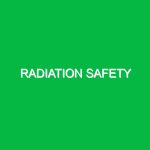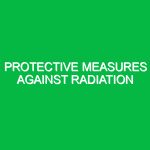Introduction
In today’s rapidly evolving industrial landscape, understanding the types of radiation exposure in the workplace has become increasingly critical for ensuring the health and safety of employees. Radiation, in various forms, is an integral part of numerous industries, including healthcare, manufacturing, and research. It is essential to grasp the implications of radiation exposure not only to comply with regulations but also to foster a safe working environment.
Radiation is energy that travels in waves or particles, and it can be broadly classified into ionizing and non-ionizing radiation. Ionizing radiation, such as X-rays and gamma rays, has enough energy to remove tightly bound electrons from atoms, leading to potential biological damage. Non-ionizing radiation, including ultraviolet (UV) light, microwaves, and radiofrequency radiation, does not carry enough energy to ionize atoms but can still pose health risks. This article delves into the types of radiation exposure in the workplace, related hazards, safety precautions, and regulatory frameworks to equip employers and employees with essential knowledge for effective risk management.
Types of Radiation Exposure in the Workplace
1. Ionizing Radiation
Ionizing radiation is a significant concern in several sectors. It includes particles such as alpha and beta particles, as well as high-energy electromagnetic waves like X-rays and gamma rays. Common workplace environments where ionizing radiation exposure occurs include:
– **Medical Facilities**: Radiology departments employ X-ray machines and CT scanners, which produce ionizing radiation. Healthcare professionals, including radiologists and technicians, are at risk of exposure if proper safety protocols aren’t followed.
– **Nuclear Power Plants**: Workers in these facilities face exposure from radioactive materials used in energy production. Strict monitoring and protective measures are essential to mitigate risks.
– **Research Laboratories**: Scientists conducting experiments with radioactive isotopes may encounter ionizing radiation. It’s crucial to adhere to safety standards to prevent accidental exposure.
2. Non-Ionizing Radiation
Non-ionizing radiation, while generally considered less hazardous, still presents risks in various workplaces. Examples include:
– **Telecommunications**: Workers installing cell towers may be exposed to radiofrequency radiation, which can have health implications with prolonged exposure.
– **Welding and Cutting Operations**: Ultraviolet radiation emitted during welding processes can lead to skin burns and eye injuries if proper protective measures aren’t utilized.
– **Electromagnetic Fields (EMF)**: Employees working near high-voltage equipment may be exposed to low-frequency EMF, which is still being researched for potential health effects.
Hazards and Risks Associated with Radiation Exposure
Understanding the hazards associated with the types of radiation exposure in the workplace is vital for effective risk management. Here are some potential risks:
1. Health Risks
Prolonged exposure to ionizing radiation can lead to serious health issues, including:
– **Cancer**: Ionizing radiation is a known carcinogen, with increased risks of developing various cancers, including leukemia and thyroid cancer, especially in healthcare settings.
– **Radiation Sickness**: Acute exposure to high levels of radiation can lead to radiation sickness, characterized by nausea, vomiting, and fatigue.
– **Genetic Mutations**: Ionizing radiation can cause damage to DNA, leading to potential genetic mutations that can affect future generations.
Non-ionizing radiation, while less intense, can still lead to:
– **Skin Damage**: UV radiation can cause skin burns and increase the risk of skin cancers.
– **Eye Damage**: Prolonged exposure to UV rays can lead to cataracts and other eye disorders.
2. Psychological and Operational Risks
The psychological impact of radiation exposure concerns can lead to anxiety and stress among workers, ultimately affecting productivity. Additionally, inadequate safety practices can result in operational disruptions, particularly in industries reliant on precise methodologies, such as healthcare and nuclear energy.
Safety Precautions and Best Practices
To mitigate the risks associated with the types of radiation exposure in the workplace, implementing robust safety protocols is essential. Here are some effective strategies:
1. Training and Education
Regular training programs should be mandatory for all employees working in environments with potential radiation exposure. Educating workers about the risks and safe handling procedures can dramatically reduce accidents. For instance, a radiology technician once shared how a comprehensive training session helped them identify and mitigate potential hazards, leading to a safer work environment.
2. Personal Protective Equipment (PPE)
Providing appropriate PPE is crucial. For ionizing radiation, this may include lead aprons, gloves, and shields. In contrast, workers exposed to UV radiation should wear protective clothing, hats, and UV-blocking eyewear. A case study from a medical facility illustrated that after implementing strict PPE guidelines, the incidence of skin and eye injuries significantly decreased.
3. Monitoring and Surveillance
Regular monitoring of radiation levels is essential. This includes using dosimeters to track individual exposure levels and conducting area surveys to ensure that radiation levels remain within safe limits. Implementing a system of checks can help catch any potential issues early.
4. Work Practices
Adopting safe work practices can minimize exposure. For instance, employing remote handling techniques in laboratories or utilizing shielding techniques in medical facilities can significantly reduce the risk of exposure. A hypothetical scenario revolves around a nuclear technician who effectively utilized shielding barriers while conducting maintenance, showcasing the importance of procedural adherence.
5. Emergency Preparedness
Establishing a clear emergency response plan is vital. Workers should be familiar with the procedures to follow in the event of a radiation leak or accidental exposure. Regular drills can ensure that all employees know how to respond effectively, minimizing potential harm.
Regulatory Frameworks Governing Radiation Exposure
Various regulations and standards govern the types of radiation exposure in the workplace. Awareness of these regulations is crucial for compliance and safety:
1. The Occupational Safety and Health Administration (OSHA)
In the United States, OSHA sets forth standards for managing exposure to hazardous substances, including radiation. They outline permissible exposure limits and require employers to implement safety measures to protect workers.
2. The National Council on Radiation Protection and Measurements (NCRP)
The NCRP provides guidance on radiation protection, emphasizing the importance of minimizing exposure. Their recommendations are widely adopted in various industries.
3. The International Atomic Energy Agency (IAEA)
The IAEA offers international safety standards for radiation protection, providing guidelines that help countries establish their regulations and policies.
4. State and Local Regulations
In addition to federal guidelines, many states and local jurisdictions have specific regulations governing radiation safety, which can vary significantly. Employers must stay informed about these laws to ensure compliance.
Conclusion
Understanding the types of radiation exposure in the workplace is not just a regulatory obligation but a fundamental component of fostering a safe working environment. By recognizing the various forms of radiation, the associated risks, and the necessary safety precautions, workplaces can create a culture of safety that protects employees from harm. Additionally, staying compliant with regulatory frameworks ensures that organizations maintain high safety standards while promoting health and well-being.
Through collective efforts in training, proper use of PPE, continuous monitoring, and adherence to regulations, workplaces can significantly reduce the risks posed by radiation exposure. By prioritizing safety, organizations not only protect their workers but also enhance productivity and foster a positive workplace culture.


